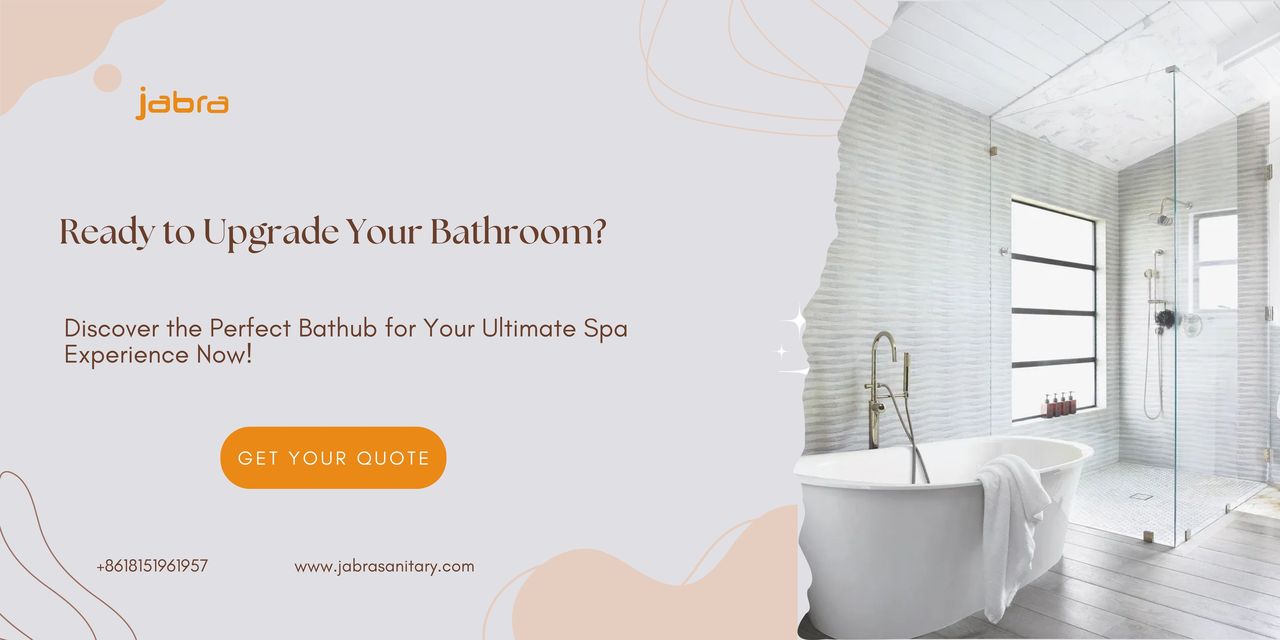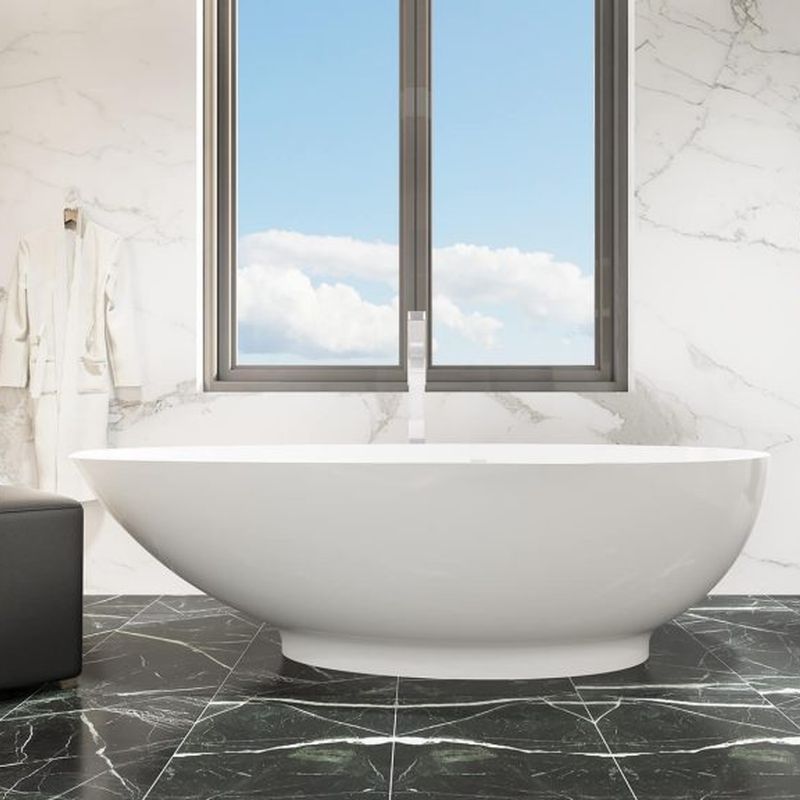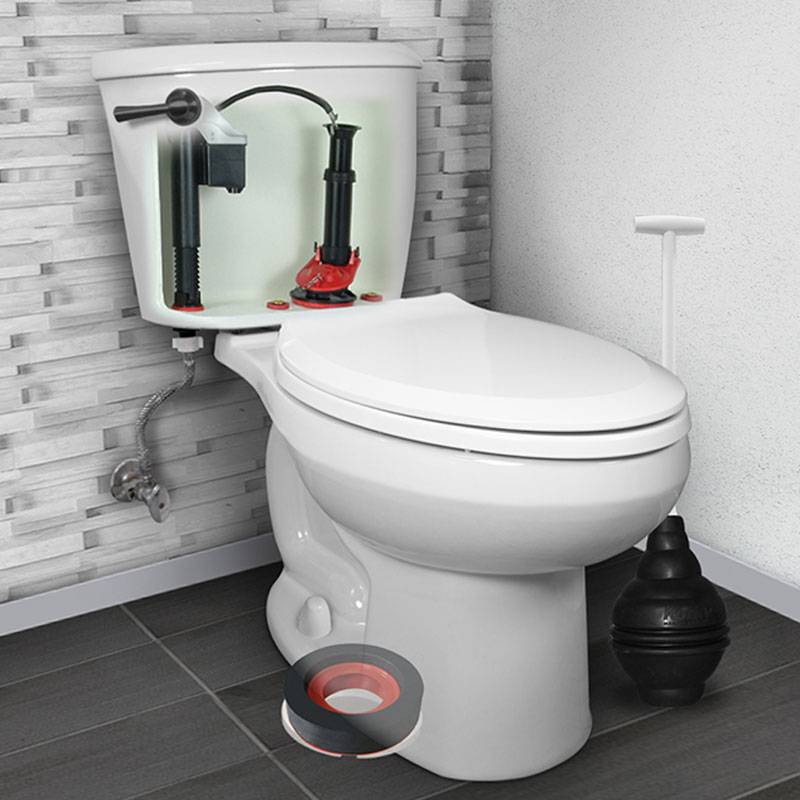 English
English
Jabra Sanitary is a sanitaryware supplier offering toilets, sinks, faucets, bathtubs, etc., at competitive prices. If you're a distributor, wholesaler, or project contractor, get a quote today!
 $23.9 Limited-time Offer
$23.9 Limited-time Offer Consignment Policy
Consignment Policy 20 Years of Experience
20 Years of Experience
Soaking tubs are a popular choice for people who want to make their bathrooms feel like a spa. In this guide, we'll explore all that you need to know before purchasing a soaker tub.
It includes what is a soaking tub, its features and advantages, materials, types and sizes, purchasing considerations, and maintenance tips.
If you want to buy a soaking tub, read through this guide and you will make an informed decision.
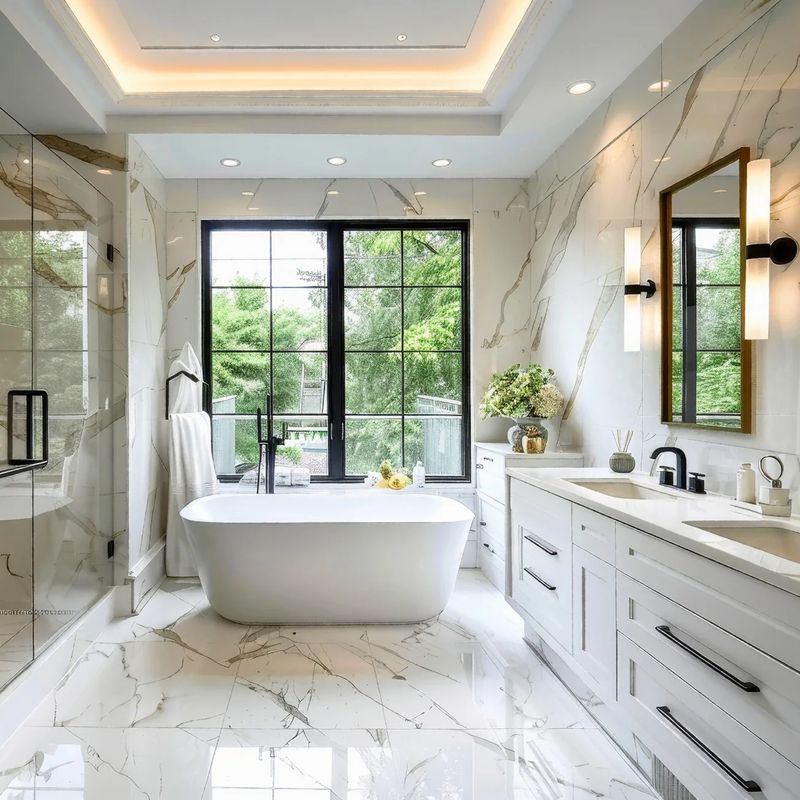
Table of Contents
What is a Soaking Tub?
Soaking Tub vs. Regular Tub vs. Japanese Soaking Tub
Why Should You Buy a Soaking Tub?
Common Soaking Tub Materials
Types of Soaking Tubs
What is the Average Size of Soaking Tub?
How Much Does a Soaking Tub Cost?
What to Consider Before Buying Soaking Tub
Maintenance Tips for Soaking Tubs
Wholesale Soaker Tubs: Buy Soaking Bathtubs in Bulk Online
FAQs
Conclusion
What is a Soaking Tub?
A soaking tub is a freestanding bathtub that is typically oval. The purpose of this is to cover your body with water, meaning you will no longer have your knees or arms exposed to the cold compared to more traditional bathtub designs.
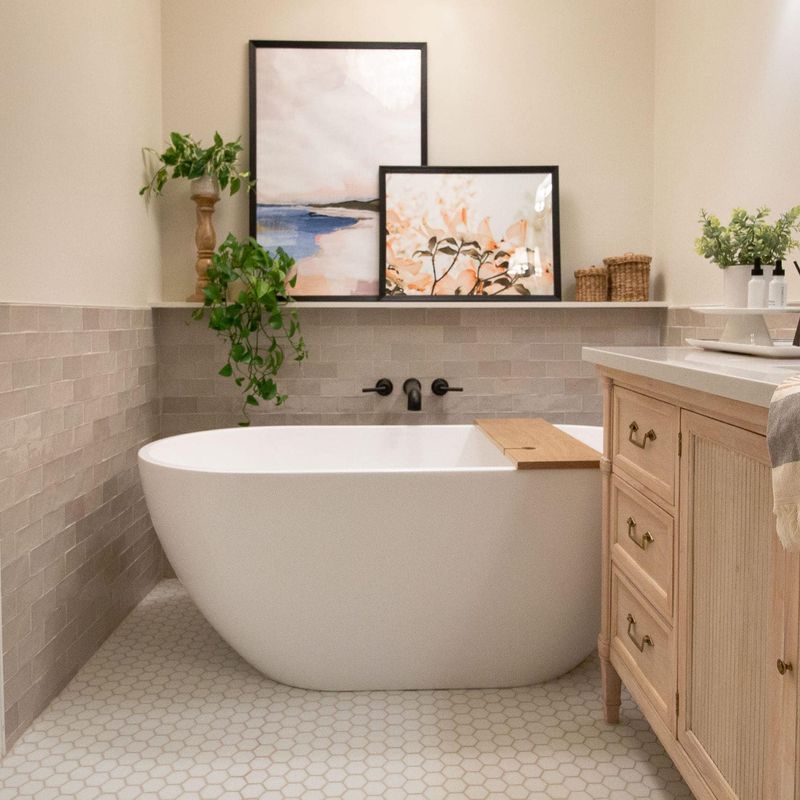
Soaking tubs are known for their depth, which usually ranges from 14 to 24 inches, and their ability to hold more water.
They're made to be comfortable for lying back and can come in different shapes and sizes to fit any bathroom. Some even have extra features like armrests or headrests.
There are several types of soaking bathtubs to fit different tastes and spaces.
- Freestanding tubs stand alone and can be the centerpiece of a bathroom.
- Drop-in tubs fit into a platform for a seamless look. Alcove tubs are great for smaller bathrooms, fitting between three walls.
- Japanese-style tubs are compact with high sides, perfect for tight spaces.
- Walk-in tubs have doors for easy access, which is helpful for those with mobility issues.
Soaking tubs are great for relaxation, stress relief, and even better sleep. They can also help with muscle and joint pain, making them a good choice for comfort and wellness in the bathroom.
Soaking Tub vs. Regular Tub vs. Japanese Soaking Tub
Each type of soaking tub caters to different bathroom sizes and personal preferences.
Whether you're seeking a spa-like retreat, a compact solution for small bathrooms, or a traditional bathing routine, understanding the differences between the three tubs below can help you make the best choice for your home.
(1) Design
Regular Tub: Typically found in most homes, designed for daily bathing and quick rinses.
Soaking Tub: Created for full-body immersion and relaxation, often larger with a focus on comfort.
Japanese Soaking Tub: Designed for sitting, with a focus on deep water and a smaller footprint.
(2) Water Depth
Regular Tub: Around 14-17 inches deep, suitable for everyday use.
Soaking Tub: At least 20 inches deep for full immersion.
Japanese Soaking Tub: Up to 36 inches deep, providing a near-total submersion experience.
(3) Height
Regular Tub: Standard height, usually around 14-17 inches from the floor to the top edge.
Soaking Tub: Taller, often 24 inches or more.
Japanese Soaking Tub: Similar in height to a soaking tub, but designed for seating rather than lying down.
(4) Comfort
Regular Tub: Adequate for daily use, but not specifically designed for extended relaxation.
Soaking Tub: Often includes features like backrests and armrests for a more comfortable soak.
Japanese Soaking Tub: Designed with a seat for comfortable sitting during a soak.
(5) Installation
Regular Tub: This can be built-in, walk-in, or standalone.
Soaking Tub: Often standalone or drop-in, allowing for flexibility in bathroom design.
Japanese Soaking Tub: Typically requires a specific space with waterlines and floor support.
(6) Space Considerations
Regular Tub: Fits well in most bathroom layouts, standard in size.
Soaking Tub: Larger and deeper, may require more space in the bathroom.
Japanese Soaking Tub: Compact and can be ideal for smaller bathrooms.
In summary, soaking tubs offer a luxurious bathing experience that regular tubs do not. They are deeper and more comfortable, designed for relaxation rather than just cleaning.
Japanese soaking tubs are a unique variant that emphasizes a seated soaking experience in a compact space.
Why Should You Buy a Soaking Tub?
If you want to soak your body with water, you can buy a soaking tub. Apart from that, many benefits make a soaking tub an attractive addition to any bathroom.
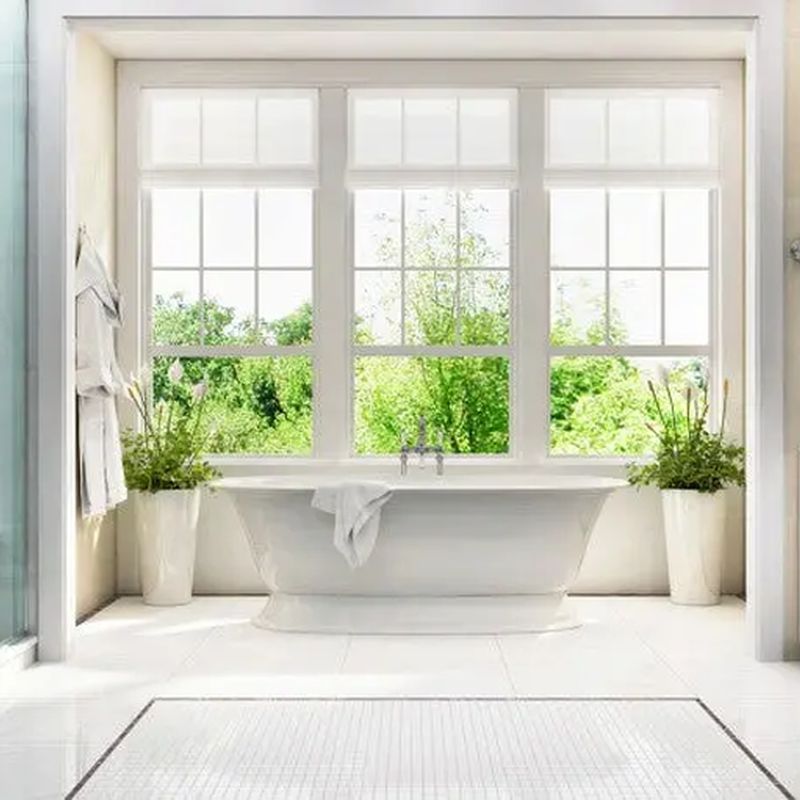
Here's a detailed look at the benefits:
(1) Contemporary Style
Soaking tubs are not just functional. They are a statement piece that can elevate the aesthetic of your bathroom.
With their sleek designs and various materials, they can complement a range of contemporary bathroom styles, from minimalist to opulent.
(2) Deep Relaxation
One of the primary reasons for a soaking tub is the deep relaxation. The ability to submerge oneself completely in warm water is a proven stress reliever and can help you unwind after a long day.
(3) Health Benefits
Soaking in a tub can have numerous health benefits, including muscle relaxation, improved circulation, and relief from aches and pains. It's a natural remedy that can enhance your well-being.
(4) Efficient Use of Space
Soaking tubs can be designed to fit various spaces. Alcove and corner soaking tubs can fit into smaller bathrooms without compromising on the soaking experience.
(5) Tub Water Capacity
The larger water capacity of soaking tubs allows for a longer and more luxurious soak. This is particularly beneficial for those who enjoy taking their time to relax in the bath.
(6) Energy Efficiency
Soaking tubs can be more energy-efficient than taking multiple short showers. By using the tub for one long soak, you can reduce your household's water and energy consumption.
(7) Versatility
Soaking tubs come in various shapes, sizes, and materials, making them versatile for different bathroom layouts and design preferences.
This variety ensures you can find a soaking bathtub that fits your needs and style.
(8) Customizable
Many soaking tubs offer customizable features, such as different finishes, accessories, and even smart technology integration. This allows you to create a truly personalized bathing experience.
(9) Ease of Maintenance
High-quality soaking tubs are often made from materials that are easy to clean and maintain. With proper care, they can retain their appearance and functionality for years to come.
In conclusion, a soaking tub is an investment in comfort, style, and health.
Common Soaking Tub Materials
When choosing a soaking tub, material is a crucial consideration as it affects the tub's durability, heat retention, and overall aesthetic.
Here's an overview of some common soaking tub materials:
(1) Fiberglass
Fiberglass tubs are known for their affordability and lightweight nature. They are easy to install and maintain. It has a surface that can be repaired.
However, they may not be as durable as other materials and can fade over time.
(2) Porcelain
Porcelain tubs, specifically porcelain-enameled steel, are common and often inexpensive. They are durable, easy to clean, and available in standard sizes.
Despite their benefits, they can chip and rust if the surface is damaged. They have limited color and shape options.
(3) Acrylic
Acrylic tubs are popular due to their versatility, durability, and wide range of designs. They are lightweight, affordable, and have a non-porous surface that is easy to clean and repair.
However, they can scratch if cleaned with abrasive cleaners.
(4) Cast Iron
Enameled cast iron tubs are very durable and have excellent heat retention. They are heavy, which can be a disadvantage for installation.
They are more expensive. Despite their weight, a well-maintained cast iron tub can last for decades.
(5) Stone
Stone resin tubs offer exceptional durability and are known for their slip-resistant surfaces. They are easy to clean and maintain and can last for a long time.
(6) Copper
Copper tubs are a luxury option known for their natural antibacterial properties and unique aesthetic. They develop a patina over time.
Copper tubs are durable but can be expensive and require regular maintenance to prevent tarnishing.
(7) Wood
Wooden soaking tubs offer a traditional and organic feel. They are known for their antibacterial properties and can last for decades with proper care. Wood tubs provide a unique bathing experience and are often appreciated for their aesthetic and therapeutic qualities.
Each material has its own set of advantages and disadvantages, and the choice will depend on personal preference, budget, and the specific needs of your bathroom space.
Types of Soaking Tubs
Before making a purchase, you should first consider what type of soaking tubs you need.
Below is a detailed table outlining various types of soaking tubs, their characteristics, suitability for different bathroom settings, and common sizes:
Types of Soaking Tubs |
Characteristics |
Suitability |
Common sizes (Length x Width x Depth in inches) |
|---|---|---|---|
Japanese Soaking Tubs |
Small, deep, for sitting |
Small bathrooms, Japanese-style decor |
48x48x24 |
Alcove Soaking Tubs |
Space-saving, standard depth |
Medium to large bathrooms |
60x32x20 |
Drop-In Soaking Tubs |
Customizable, built-in look |
Modern bathrooms, deck or platform required |
60x32x20 |
Clawfoot Soaking Tubs |
Classic, elegant |
Traditional or vintage bathrooms |
66x36x22 |
Freestanding Soaking Tubs |
Aesthetically pleasing, versatile |
Any size bathroom, focal point |
72x36x24 |
Pedestal Soaking Tubs |
Minimalist, easy to clean |
Modern or minimalist bathrooms |
60x30x20 |
Corner Soaking Tubs |
Space-efficient, unique shape |
Small bathrooms, corner spaces |
54x54x24 |
Walk-in Soaking Tubs |
Accessible, safe for seniors |
Aging in place, accessible bathrooms |
60x36x36 |
Undermount Soaking Tubs |
Sleek, modern, requires custom countertop |
Modern bathrooms, custom design |
Varies |
Jetted Soaking Tubs |
Relaxing, therapeutic |
Any size bathroom, luxury bathrooms |
72x36x24 |
What is the Average Size of Soaking Tub?
Then, you should carefully measure the space for a soaker tub for your bathroom.
Here are two detailed tables outlining the average dimensions of different types of soaking tubs, based on common sizes found in the industry.
Type of Soaking Tub |
Average Dimensions (Length x Width x Depth in inches) |
|---|---|
Standard Soaking Tub |
60 x 30 x 20-24 |
Small Soaking Tubs |
54 x 28 x 20-24 |
Large Soaking Tubs |
72 x 40 x 24-28 |
How Deep Should a Soaking Tub Be?
Average Depth of Soaking Tub |
Average Dimensions (Length x Width x Depth in inches) |
|---|---|
Deep Soaking Tubs |
Varies, but can be up to 32-38 inches in depth. |
Deepest Soaking Tub/Shower Combo |
Up to 38 inches deep. |
How Deep Should a Soaking Tub Be |
At least 20 inches, but can be up to 24 inches for a full-body submersion. |
How Much Does a Soaking Tub Cost?
The cost of a soaking tub can vary widely. It is influenced by factors such as the material, brand, and any additional features.
Here's a general overview of the associated costs:
Soaking Tubs Cost: Soaking tubs can range from affordable to high-end. The prices typically start around a few hundred dollars and go up to several thousand for more luxurious models.
Bathtub Replacement Costs: The cost to replace a bathtub, including labor, can vary significantly. But it generally falls within the range of a few thousand dollars.
Plumbing and Installation Cost: Installation and plumbing work can add to the overall cost. The cost is often in the range of hundreds to over a thousand dollars, depending on the complexity of the job.
Water Heater Costs: If your existing water heater can't handle the increased demand for a soaking tub, you might need to upgrade. It costs anywhere from a few hundred to over three thousand dollars.
Cost for Additional Features: Optional features like thermotherapy, aromatherapy, or jetted systems can significantly increase the price, especially in luxury models.
What to Consider Before Buying Soaking Tub
When considering the purchase of a soaking tub, several factors come into play to ensure you select the right one for your needs and bathroom space.
Bathroom Layout and Space Requirements
Consider the dimensions of your bathroom and the available space. Soaking tubs can vary significantly in size, and may require additional room for movement and installation.
Tub Installation Types and Considerations
Soaking tubs can be freestanding, drop-in, alcove, or corner models. Each type has specific installation requirements and space considerations.
Check Your Bathroom Floor Before Installing
Ensure your bathroom floor can support the weight of the filled tub, especially for heavy materials like cast iron.
Plumbing and Water Heater Compatibility
Soaking tubs require more water and may need compatible plumbing and a water heater.
Material and Style Selection
Choose a material that suits your style and budget. Options range from acrylic to cast iron, each with its benefits and drawbacks.
Potential Overflow Issues
Deeper tubs can lead to overflow if not filled carefully. Consider tub designs with anti-overflow features.
Consider Water Depth and Comfort
Water depth can range from 14 to over 20 inches, affecting the comfort and relaxation experience.
Insulation
Materials like stone resin, cast iron, and copper retain heat well, keeping the water warm for longer.
Physical Restrictions
If mobility is a concern, consider walk-in tubs or those with lower entry points for easier access.
Soaker Tub Accessories
Think about additional features like jets, heating elements, or chromotherapy that can enhance your bathing experience.
Cost of the Tub and Maintenance Cost
Soaking tubs can range in price from affordable to high-end. Maintenance costs can also vary based on the material and features.
Maintenance Tips for Soaking Tubs
Proper maintenance is key to extending the life and beauty of your soaking tub. Here are some essential tips to keep your soaker tub in top condition:
Rinse Off Residue: After each use, rinse off any leftover residue, such as soap or body oils. This simple step can significantly reduce the need for aggressive cleaning.
Mild Cleaning Products: Use only mild cleaning products and non-abrasive tools to clean your tub.
Harsh chemicals and abrasive materials can damage the surface, especially for materials like acrylic and fiberglass.
Clog Prevention: To clear up clogs, especially in jetted tubs, pour a vinegar solution into the jets and run warm water through them. This natural method helps dissolve mineral deposits and can prevent future blockages.
Wholesale Soaker Tubs: Buy Soaking Bathtubs in Bulk Online
When considering the purchase of soaking tubs in bulk, either for business or large-scale projects, there are several advantages and factors to consider.
Here's a brief overview:
Cost Savings: Buying soaking tubs wholesale can lead to significant cost savings due to the economies of scale.
This is particularly beneficial for businesses looking to offer these products at a competitive price. This is also conducive to contractors working on multiple installations.
Bulk Availability: Wholesale purchasing ensures you have a consistent supply of tubs. This is crucial for maintaining inventory levels and fulfilling project demands without delays.
Consistent Product Quality: By buying in bulk from a reputable supplier, you can ensure the quality of the soaking tubs is consistent across all units.
This is essential for maintaining a high standard of service or product offering.
Customization Options: Many manufacturers offer customization options for wholesale buyers, which can be a significant advantage for businesses looking to differentiate their offerings.
Trustworthy Suppliers: To ensure you're getting the best value and quality, identify trustworthy suppliers by researching online platforms, attending trade shows, and checking certifications.
Visiting bathtub manufacturers and requesting samples can also help establish credibility.
Material Selection: Bathtubs can be crafted from various materials such as acrylic, fiberglass, cast iron, and stone resin.
Consulting with a reputable manufacturer can help determine the best material for your needs.
When it comes to purchasing bathtubs in bulk, jabrasanitary.com stands out as the top choice for the above benefits. Whether you're a wholesaler, a contractor, or a business looking to purchase in large quantities, Jabra Sanitary offers everything you need for a smooth and cost-effective buying experience.
FAQs
Here are the answers to some frequently asked questions about soaking tubs:
How hard is it to install a soaking tub?
Soaking tubs can be relatively easy to install, especially if you choose a freestanding model. However, the installation process can vary depending on the type of tub and your bathroom setup.
Some soaking tubs require professional installation to maintain warranty and ensure proper plumbing and electrical connections.
Can I put a soaking tub in a small bathroom?
Yes, there are soaking tub options designed for small bathrooms. Corner soaking tubs and Japanese soaker tubs maximize space.
Compact soaking tubs focus on depth rather than length for a comfortable soaking experience.
Can a soaking tub also be a shower?
Soaking tubs can be used in conjunction with a shower. Some models are designed to work as a standalone tub or as a tub/shower combo, making them versatile for your bathroom needs.
Is a soaking tub worth it?
A soaking tub can be worth it if you value relaxation, comfort, and potential health benefits. They offer a spa-like experience at home, which can help relieve stress and muscle pain.
Additionally, soaking tubs can add value to your home and serve as a focal point in your bathroom.
What are the disadvantages of a soaking tub?
Some disadvantages include the potential need for additional space, higher water usage compared to regular tubs, and the possibility of increased installation and running costs.
Additionally, some soaking tubs may not be suitable for cleaning the body before soaking, as is traditional with Japanese soaking tubs.
Conclusion
A soaking tub is an investment in comfort and wellness. It offers a luxurious bathing experience that can transform your bathroom into a personal spa.
With various types, materials, and sizes available, there's a soaking tub to suit every bathroom. Before buying a soaking tub, remember to consider your budget and make a comparison with other tubs.
If you still have any questions about soaking tubs, please contact us any time!







